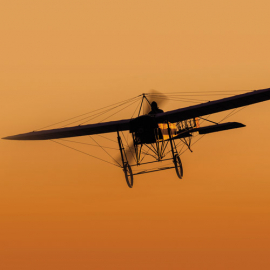Focus and Scope
Aerospace Sphere Journal (ASJ) is the printed edition of Nonprofit Non-Government Expert Society on Space Threat Defense.
ASJ highlights the issues of designing and producing future main military equipment and armaments for aerospace defense applications.
A particular attention is paid to the state of aerospace defense in the Russian Federation and foreign countries, as well as military technical cooperation.
ASJ was establish in 2016 and is published quarterly. Its former name was Aerospace Defense.
Starting with 2016, the journal has been expanding the scope of articles dedicated to scientific research in the given field welcomes scholars and researchers from the leading institutes of the Russian Academy of Sciences, technical specialists of enterprises and other representatives of the aerospace sphere to cooperate. In addition, the journal has become the dispute platform for corner-stone questions of modern post-nonclassical knowledge, as to Man in Space and Man's Cosmos; Man and / or Machine; Knowledge of the Cosmos in a multicultural society; features of cosmic consciousness and many others.
The journal’s mission is to integrate the scientific and technical potential and practical experience of specialists from different countries and of different scientific fields to develop a universal strategy for the modern aerospace industry.
Genre preferences (sections and formats) of the journal:
1. A critical review. It is a systematization of research material on this problem and its subsequent discussion. The work must not only summarize the scientific concepts of predecessors, but also to demonstrate the own author's opinion on scientific issues.
2. The original research article. It is the result of fundamental, applied, experimental study of specific scientific problems. Typically, the length of work amounts to 6 thousand words. The internal composition of the research generally includes the following elements:
- Abstract and keywords.
- Introduction, which accents a scientific problem, determines its relevance, theoretical and practical value; it also includes a brief overview of the approaches to its study. It is advisable to describe the stages of research and the methods of analysis.
- Main part, including (if necessary) the discussion.
- Conclusion, summarizing the results of the issue and giving the scientific outlook on the problem, as well as recommendations on the use of the results, etc.
- References in accordance with Russian and international standards (see instructions.).
3. The scientific essay is a research-reflection on a particular scientific problem, characterized by free inner form and comparably low volume (up to 1 thousand words).
4. Interview. Publication of interviews on current topics with prominent scientists, writers, public figures.
5. Scientific review is a critical appraisal of existing scientific publications on the issue (monographs, articles, doctoral research and so on.).
6. Polylog. By prior arrangement (Application) Author can participate in a planned scientific discussion with other authors. Topics of discussion will be published on the journal's website in advance.


 5204
5204 

